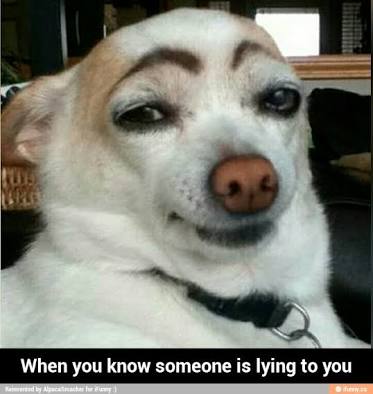How To Catch A liar
Lie spotting is about getting back to truth. The way we teach human lie detection is not about teaching you to pick people’s behavior apart or point fingers at liars. It is about arming you with scientific principles to help you have more honest interactions, better communication and more trustworthy relationships.
1. Behavioral pause or delay
You ask a person a question and you initially get nothing. After a delay, he begins to respond. How long does a delay have to be before it’s meaningful, before you would consider it a deceptive indicator? Well, it depends.
Try this exercise on a friend: Ask her the question, “On this date seven years ago, what were you doing that day?” The person will invariably pause before responding, because it’s not a question that naturally evokes an immediate response—the person has to think about it, and likely still won’t be able to offer a meaningful response.
But if it’s a question ‘like did you go to work yesterday’ and there’s a pause, know that something is wrong because this is a very recent event which should elicit a yes or no answer and possible and explanation almost immediately.
2. Verbal/non-verbal disconnect
Our brains are wired in a way that causes our verbal and nonverbal behaviors to naturally match up. So when there’s a disconnect, we consider that a potential deceptive indicator.
You see,a deceptive person will often hide her mouth or eyes when she’s being untruthful.
A common verbal/nonverbal disconnect to watch out for occurs when a person nods while saying, “No,” or turns his head from side to side while saying, “Yes.” As an exercise, if you were to perform that mismatch in response to a question, you’d find that you really have to force yourself through the motion. Yet, a deceptive person will potentially do it without even thinking about it.
3. Hiding the mouth or eyes
A deceptive person will often hide her mouth or eyes when he/she is being untruthful. There is a natural tendency to want to cover over a lie, so if a person’s hand goes in front of her mouth while she’s responding to a question, that’s significant. Similarly, there’s a natural inclination to shield oneself from the reaction of those who are being lied to. If a person shields her eyes while she’s responding to a question, what she might well be indicating, on a subconscious level, is that she can’t bear to see the reaction to the whopper she’s telling. This shielding may be accomplished with a hand, or the person might even close her eyes. We’re not referring to blinking here, but if a person closes her eyes while responding to a question that does not require reflection to answer, we consider that a means of hiding the eyes, and a likely deceptive indicator.
4. Throat-clearing or swallowing
If a person clears his throat or performs a significant swallow prior to answering the question, that’s a potential problem. If he does it after he answers, that doesn’t bother us. But if he does it before he answers, a couple of things might be happening. Usually it starts with “I swear to God…”—dressing up the lie in its Sunday best before presenting it to us. Or physiologically, the question might have created a spike in anxiety, which can cause discomfort or dryness in the mouth and throat.
5. Hand-to-face activity
Be on the lookout for anything a person does with his face or in the head region in response to your question. This often takes the form of biting or licking the lips, or pulling on the lips or ears. The reason goes back to simple high school science. You’ve asked a question, and the question creates a spike in anxiety because a truthful response would be incriminating. That, in turn, triggers the nervous system to go to work in anxiety, draining blood from the surfaces of the face, the ears, and the private areas which can create a sensation of cold or itchiness. Without the person even realizing it, his hands are drawn to those areas, or there’s a wringing or rubbing of the hands.



